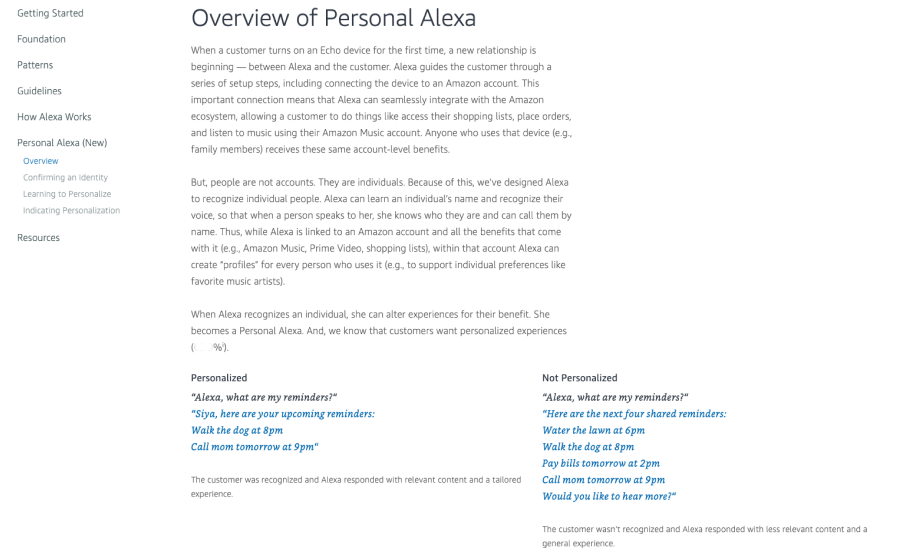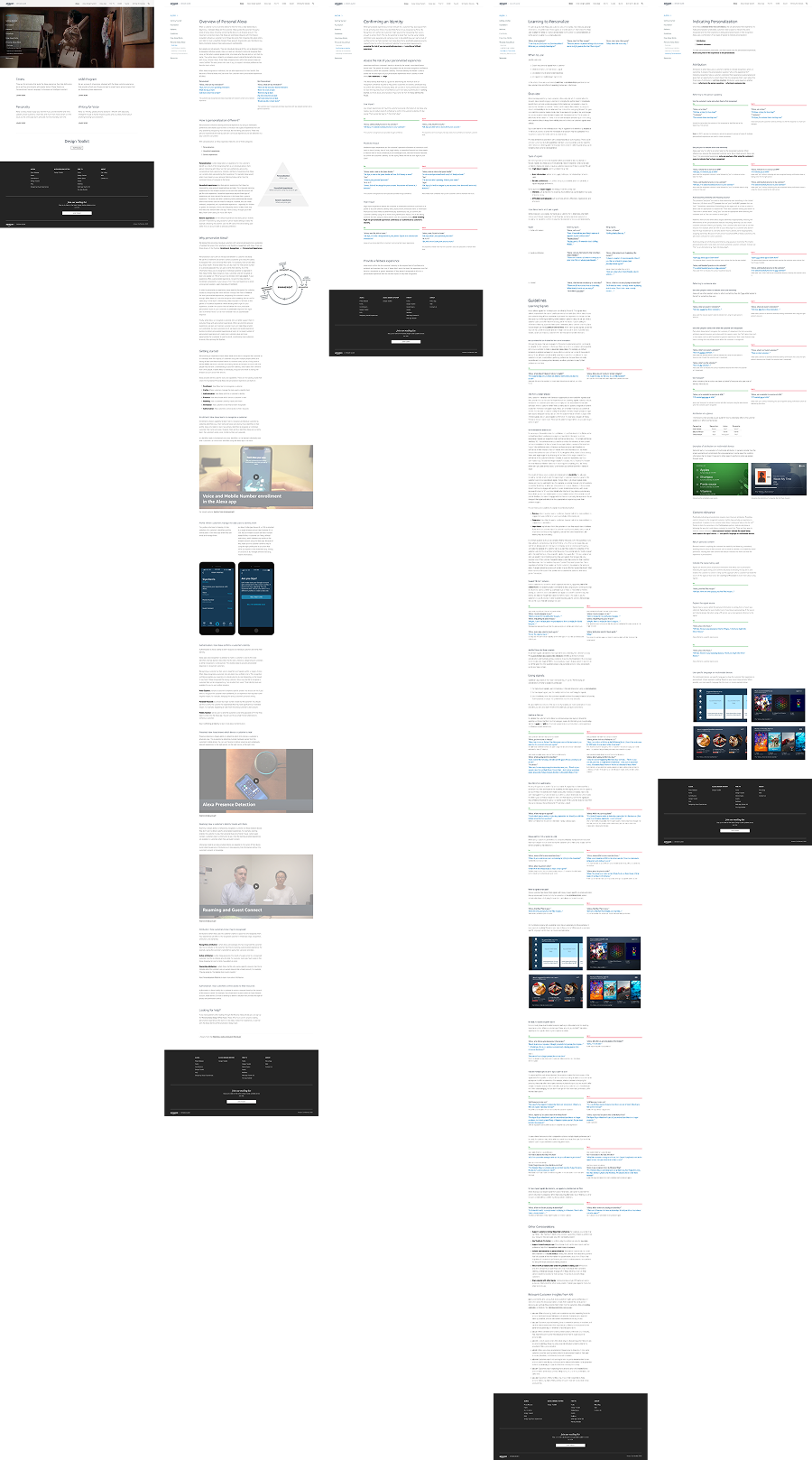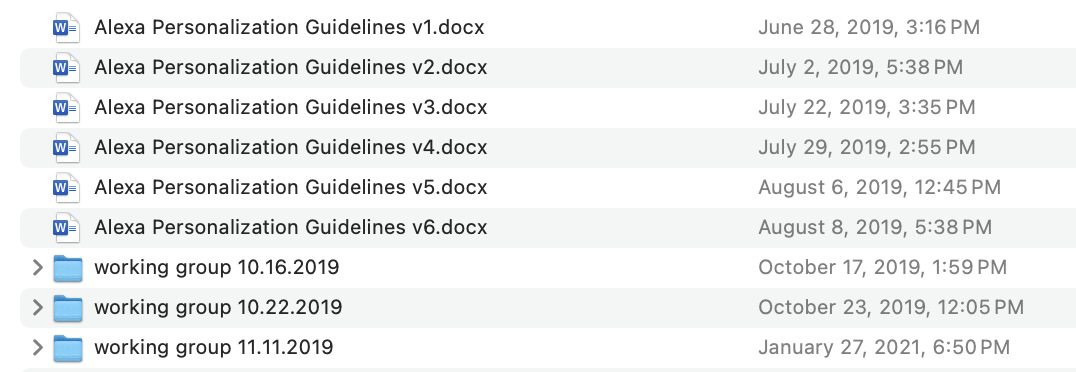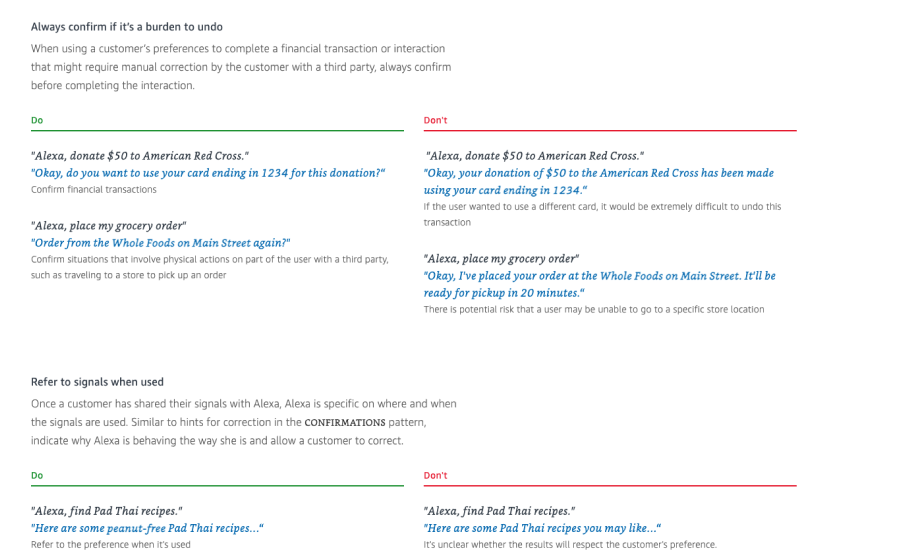
Personalizing Alexa
Amazon2019Prior to the release of voice identification, Alexa had no idea whom it was talking with. Voice identification unlocked the opportunity for Alexa to provide truely personalized experiences. This was a new paradigm for Alexa and smart assistants in general; a personalized voice assistant.
Through quantitative and qualitative research, we knew that:
- A majority (60+%) of users want Alexa to respond in a way that is specific to them as an individual
- At least half (50+%) of users perceive personalized experiences as valuable
With personalization being possible, the problem was lack of knowledge across the Alexa org on what personalization is, how it works, how to make them, and what makes a personalized experience good.
Role
I started, drove, and executed this initiative from 0-to-1.
Outcome
The Personalization HIG unlocked quality and consistency at scale. It provided cross-functional teams the resources they need to understand the underlying technical components, the product requirements, the experience guidelines, as well as best practices and reusable patterns.
It was a huge success. The Personal Alexa HIG was celebrated by teams and senior leaders across up and across the Alexa organization.


Key Challenges
Alexa has an internal Alexa HIG (Human Interface Guidelines) which establishes the quality bar for good Alexa experiences. Everyone making Alexa experiences, not just designers, are kept accountable to the content of the HIG. When it came to setting the foundation of personalization, the solution involved addressing five key challenges:
- Identifying the need
- Defining the content
- Testing the content
- Publishing
- Communicating up and out
Identifying the need
The problem presented itself naturally. As I launched the Alexa Profile, Alexa Presence, Alexa Authentication, and Alexa Authorization platform products, I noticed the teams implementing those products had the same issues and same questions. It was clear that the overally quality of customer experiences and the success of the the Alexa Identity platform needed something more than one-off partnerships with various Alexa teams. I began drafting and sharing documents, and forming working groups that attempted to solve this problem.

Defining the content
By far the most intense and divisive part of writing guidelines is determinging the what, how, and why of every piece of content. Because of the Amazon document-driven culture, most of this came out through my document reviews. Because I was on the Alexa Identity team, I had an entire team with deep knowledge and relationships that I leveraged to gather more information, clarify the problems, and effectively address open questions.

A Personal Alexa was net new for the organization. In the end, when it came to the content, it came down to starting from the basics and building from there. Also, using a lot of examples.

This is the outline of the launch version looked like:
- Defining personalization
- Clarifing the different types of personalization
- Introducing the technical building blocks
- Enrollment
- Profile
- Authentication
- Presence
- Roaming
- Attribution
- Authorization
- Best practices for mitigating risk through confirming an identify
- Introducing the risk framework
- When and how to confirm an identity
- How to collect and use personalization signals
- How to indicate personalization
- Different types and how to use attribution
- Implicitly indicating personalization through content relevance

Testing the content
To know whether this solution was effective and valuable, I needed to test it with it's future users. So, I conducted a series of moderated user tests with designers, engineers, product managers, and stakeholders from multiple Alexa teams. Not only was this simply a good practice and good rigor, it provided valuable insights and feedback that I used to refine the content before launch.
Publishing the HIG
Launching these guidelines was different than a regular product launch, but no less important. Alexa already has an internal HIG website complete with resources and a mailing list. The HIG is owned by a small group of principal designers, which I already had a close relationship with and had included as part of the process. Once leadership was aligned with the content and plan, it was a simple matter of transferring the content into the Alexa HIG CMS.
Communicating up and out
Just publishing isn't enough for people to know about it and start using it. Along the way, I had sent out update emails to broad groups and, once the HIG was published, a launch email and announcement. At the same time, my leadership was sharing these updates with the leadership chain. This frequent top-down and bottom-up strategy helped ensure that as many people across the organization were aware.
Want to talk about this project?